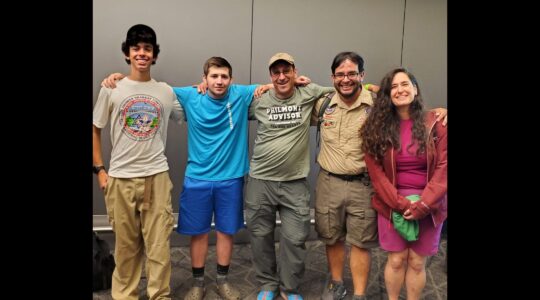LOS ANGELES, May 5 (JTA) — Missions to Israel are a staple of Jewish organizational life, but when Pepe Barreto leads a group tour there in the near future it will represent something new. Barreto is the most popular talk-show host on Spanish-language radio in Los Angeles and a major player in a new drive to boost travel to Israel by California Hispanics. The campaign is a key part of a program outlined by Daniela Aharoni, the recently arrived director of the Israel Government Tourist Office for the Western United States. With Hispanics/Latinos making up nearly half the population of Los Angeles County and one-third of the state of California, this group will be of ever-growing importance in coming years. “We have found that Latinos are free-spending tourists, with a strong religious interest in the Holy Land,” said Aharoni, sitting in her office with an expansive view of midtown Los Angeles. Aharoni was deputy director of the Israel tourist office here from 1994 to 1998, and has been amazed by how the Latino community’s economic status has risen and its influence has increased during the seven years she gone. While American Jews remain Aharoni’s main clientele, she is putting increased effort into attracting Christians. “If we can convince the pastor of a church to go, his congregants will follow him,” she said. She’s now organizing seminars and promotional materials specially tailored for pastors and ministers. Next year, Aharoni plans to explore the possibility of increasing tourism from the large Korean community in Southern California. Her jurisdiction includes 13 Western states, including Alaska and Hawaii. She acknowledged that it’s tougher to sell tourism to Israel in her territory than in the northeastern and midwestern United States. “You have a much longer travel time to begin with, and Israeli sunshine isn’t that much of a selling point to people in California or Arizona,” she said. After a disastrous slump in tourism to Israel during the past four years — the Palestinian intifada scared away many tourists — the statistics are beginning to look better. In 2000, the last “normal” year, a record-breaking 2.7 million tourists arrived in Israel. Two years later, the figure had plummeted to 206,000, before rising to 379,000 in 2004. The upswing is continuing, with figures from January and February of this year in the key North American market showing a 15 percent to 20 percent improvement over the same months last year. If the situation in the Middle East doesn’t get drastically worse, Israel expects a total of 1.7 million tourists in 2005, 1.9 million in 2006 and 2.1 million in 2007. Despite the gloom of the intifada years, Israel has improved its tourism infrastructure and has added a host of new attractions, Aharoni said. The Davidson Center and the archaeological park near the Western Wall, Yad Vashem’s new historical museum, the Israel Park in Latrun, the Palmach Museum in Tel Aviv, the Begin Museum in Jerusalem, easier access to Masada, and new facilities and projects in Sefad, Tiberias, Akko and Eilat are just some of the new sites that draw tourists, Aharoni said. She hopes the U.S. State Department’s recent easing of its warning against travel to Israel will encourage more tourism from the United States. “Tourism is absolutely vital to Israel and its economy,” she said. “For every additional 100,000 visitors, 4,000 new service jobs are created.”
JTA has documented Jewish history in real-time for over a century. Keep our journalism strong by joining us in supporting independent, award-winning reporting.





